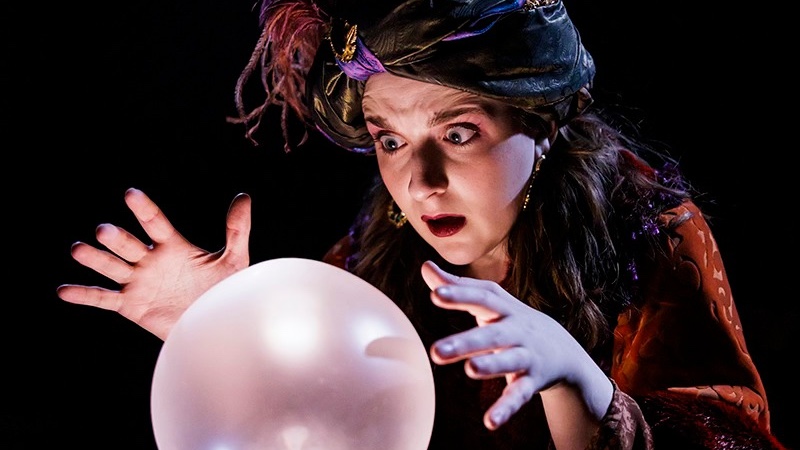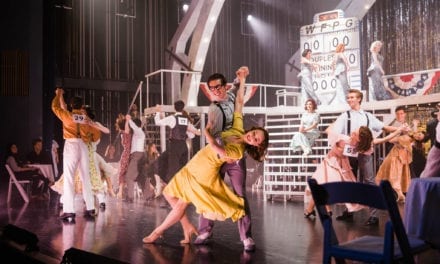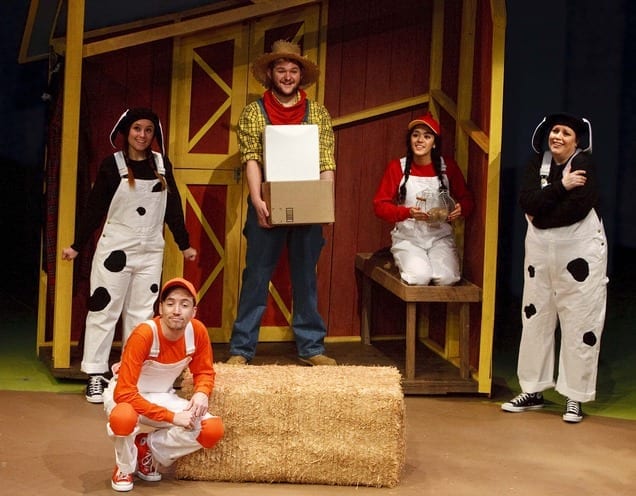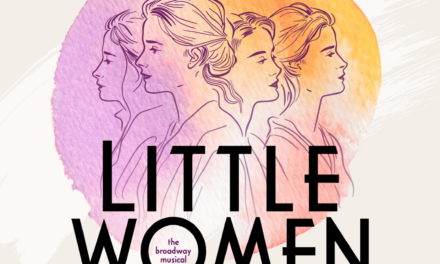PROVO – The conversion of the old Provo High School gym into the BYU West Campus Mainstage Theatre is so well done that once inside, I barely remembered the space hadn’t always been a theater. BYU‘s current production of Noel Coward’s Blithe Spirit—set in 1937, not much earlier than when the old high school was built in 1956—is equally well-suited to the space.
Upon entry, the audience is greeted with a highly detailed and historically accurate drawing room akin to a large manor outside of London, two years before the start of World War II. According to the detailed dramaturgy notes in the show’s program, Noël Coward wrote Blithe Spirit in a mere six days in 1941, in the midst of the war. Coward wanted to write a light comedy to help distract and lift spirits during a very dark time in history. The play opened in London a few weeks later and completed a record setting run of over 2,000 performances.
It seems Coward’s works are less frequently produced these days, and I wondered whether and how BYU would make the production relevant. I was quickly reminded that period and classical theatre are what BYU does best. For example, I recently saw House of Desires in the smaller West Campus theater, a stunning production written and set in 17th century Spain. This is BYU’s niche. Blithe Spirit holds up to BYU’s tradition of excellence in the genre with impeccable attention to detail in all production values.
The set, designed by undergraduate Cooper Tribett, is a feast for the eyes—a well-stocked bar, including a liquor stash inside a lovely old globe, bookshelves tightly organized with leather-bound tomes, plaster busts and various other tasteful tchotchke soar towards the lighting grid, suggesting opulently vaulted ceilings. An old gramophone plays music of the day throughout the production, adding a richness to Joey Wright’s sound design. Tribett’s set design also includes a number of convincingly supernatural stage tricks throughout the production, particularly at the very end when the ghostly antics reach their climax.
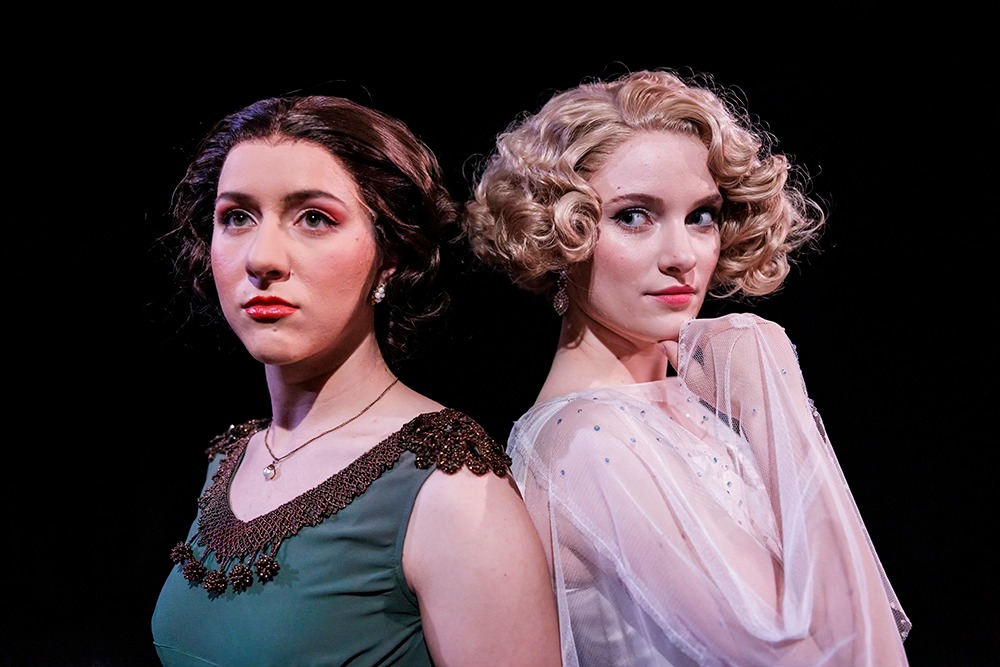
Show closes June 15. Photo credit: Abby Shelton/BYU
The costumes (another BYU strong suit) are impeccable. Designed by Julia Inouye, a senior emphasizing in costume design, the costumes are detailed, historically accurate and lovely. Elvira’s dress is a particularly mesmerizing white floor-length gown in a shimmery satin. The dress, cut on the bias as was popular in the 1930s, creates a stunning look for the character. A sheer half-cape perfectly completes the look. Inouye’s program note describes how finding the right fabric for Elvira’s costume was challenging because it “needed to have a texture that worked for the ‘Hollywood glamor era’ style…but would also work for the ghostly effects.” In this, she succeeded immensely.
Costume pieces for Madame Arcati, played by Meredith DeFord, are also worthy of mention. The orange crushed velvet cocoon cape practically creates a character of its own. Inouye also designed the wigs, which were very well done. Wigs can be tricky for productions to get right, and this one achieves just that.
The production is well cast, and DeFord’s Madame Arcati is particularly delightful. Deford’s dialect, physical humor and comic timing are excellent. DeFord is a senior in the Theatre Arts Education program and her bio paints her as a bit of a jack-of-all-theatrical-trades—a skillset that will serve her well wherever she goes in her career, particularly in theatre education. Jonathan Avila is outstanding as Charles, and his dialect and character work are stellar. Heather Schraedel also gives a strong performance as Ruth and does well with her dialect despite an occasional tendency to hurry lines, which reduces enunciation and clarity. Overall, the dialects, coached by Shelley Graham, are well done. The ensemble works together cohesively to produce a clean, well-rehearsed and tight production.
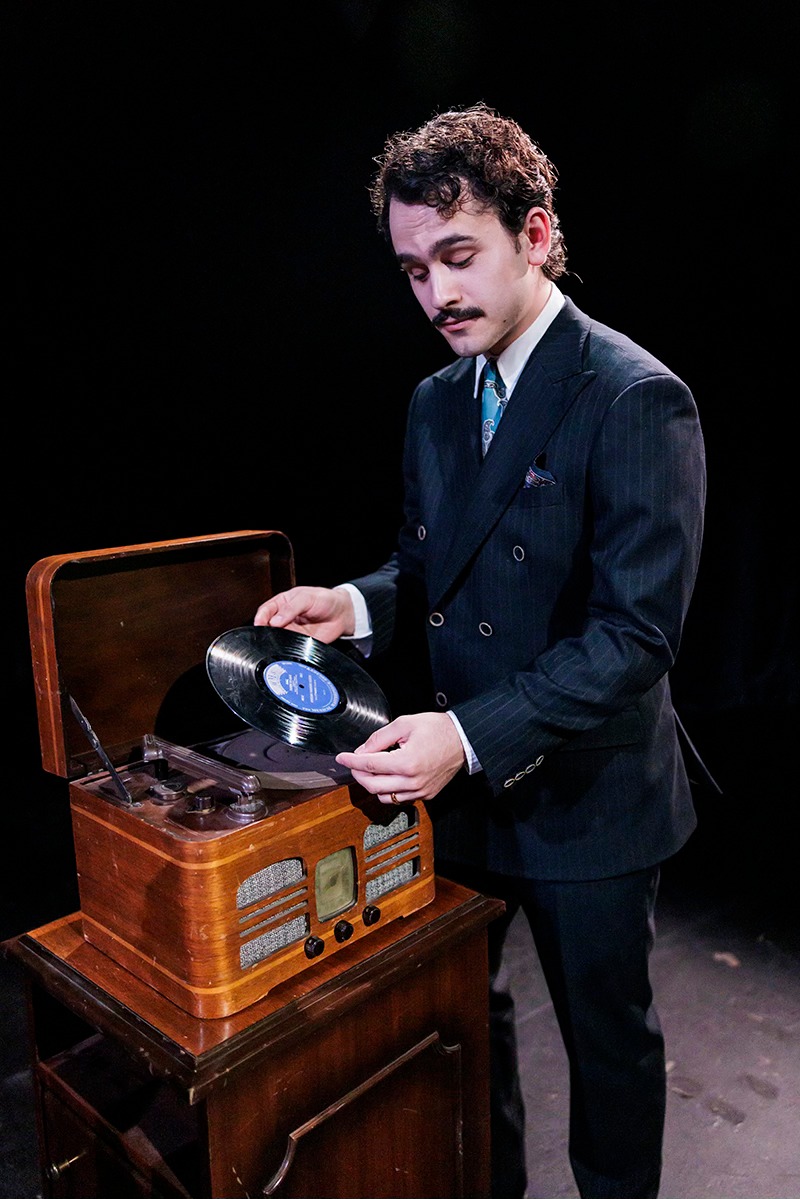
Photo credit: Abby Shelton/BYU
Director Geoffrey Reynolds is a visiting professor at BYU, and his work in this production evidences his long list of production credits around the globe. I was disappointed at a lack of director’s note in the program, as I wanted to understand what Reynolds hoped to achieve. As this is a student production, Assistant director Luke Garrett also deserves credit for the tightness of this production. The show’s pacing is just right—unhurried without dragging—and moves along without feeling rushed.
Blocking is simple and clean, and supports the plot line and character arcs. I was struck by how scene changes are careful, efficient, yet unrushed. Very small details such as a change of a flower arrangement and the movement of a tray or glass in the dim light moved the production forward efficiently. Reynolds and Garrett stage scenes in a way that enhances and spotlights the natural comic ability of DeFord, a talented actor who provides the funniest stage bits—from her overdramatic trances, to her flapper era soft shoe routine.
Overall, Blithe Spirit at BYU is a very strong production and well worth seeing. It is visually captivating, humorous and does Coward’s script justice. In a state where there is so much theatre available, university productions can often be overlooked, I recommend not overlooking this one.

This review was generously sponsored by a grant from the Provo City Recreation, Arts, and Park (RAP) grant.

